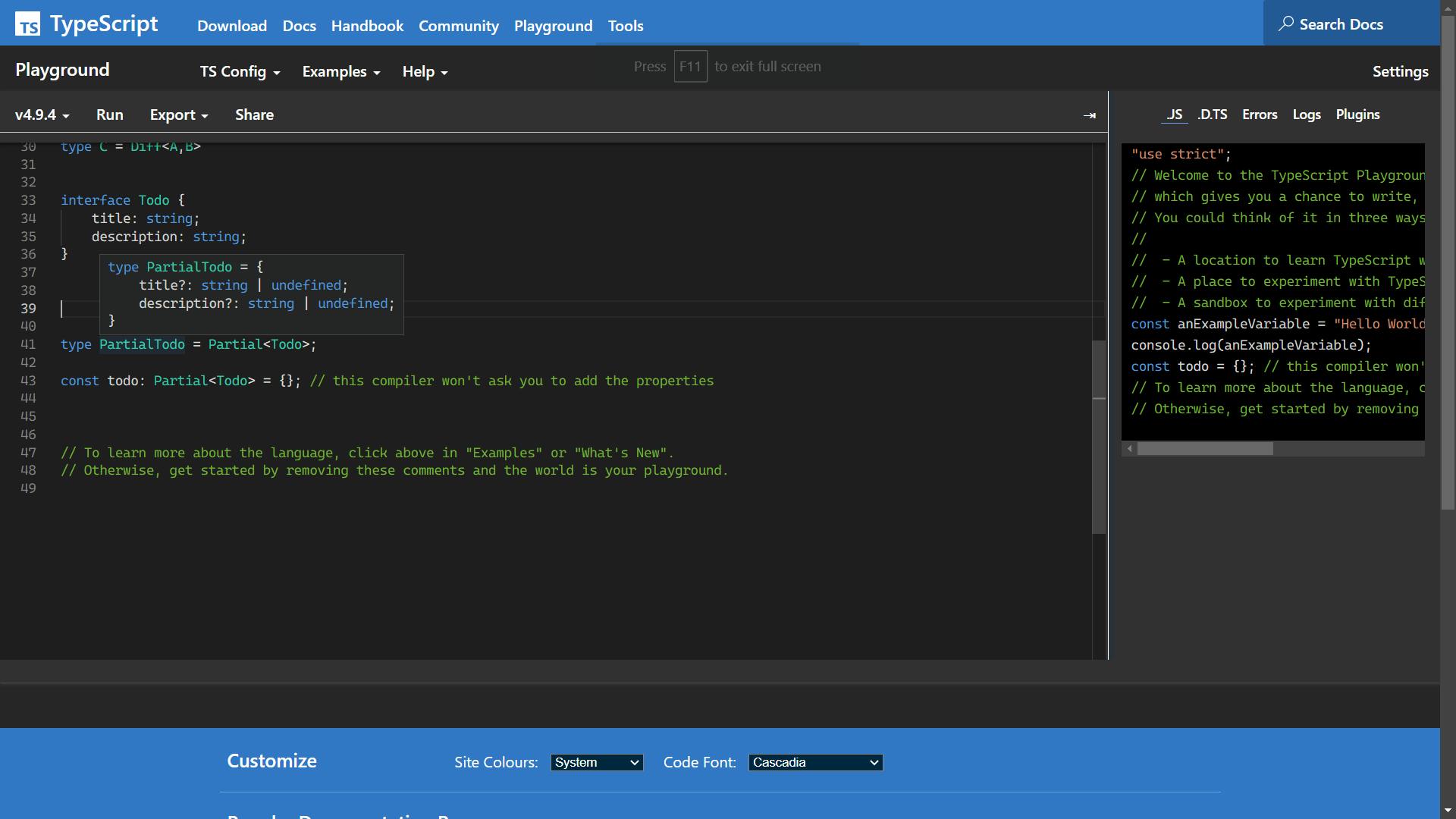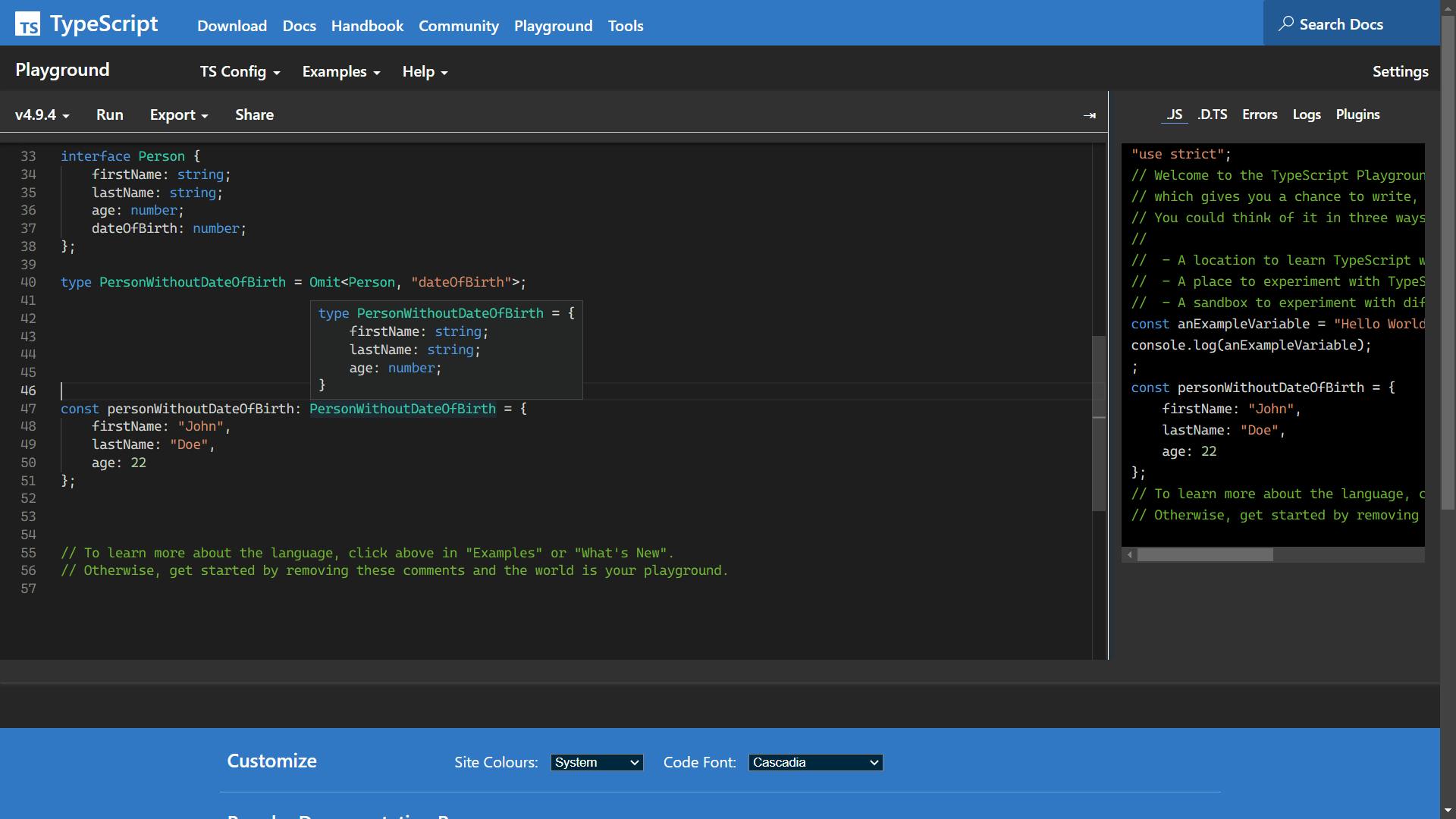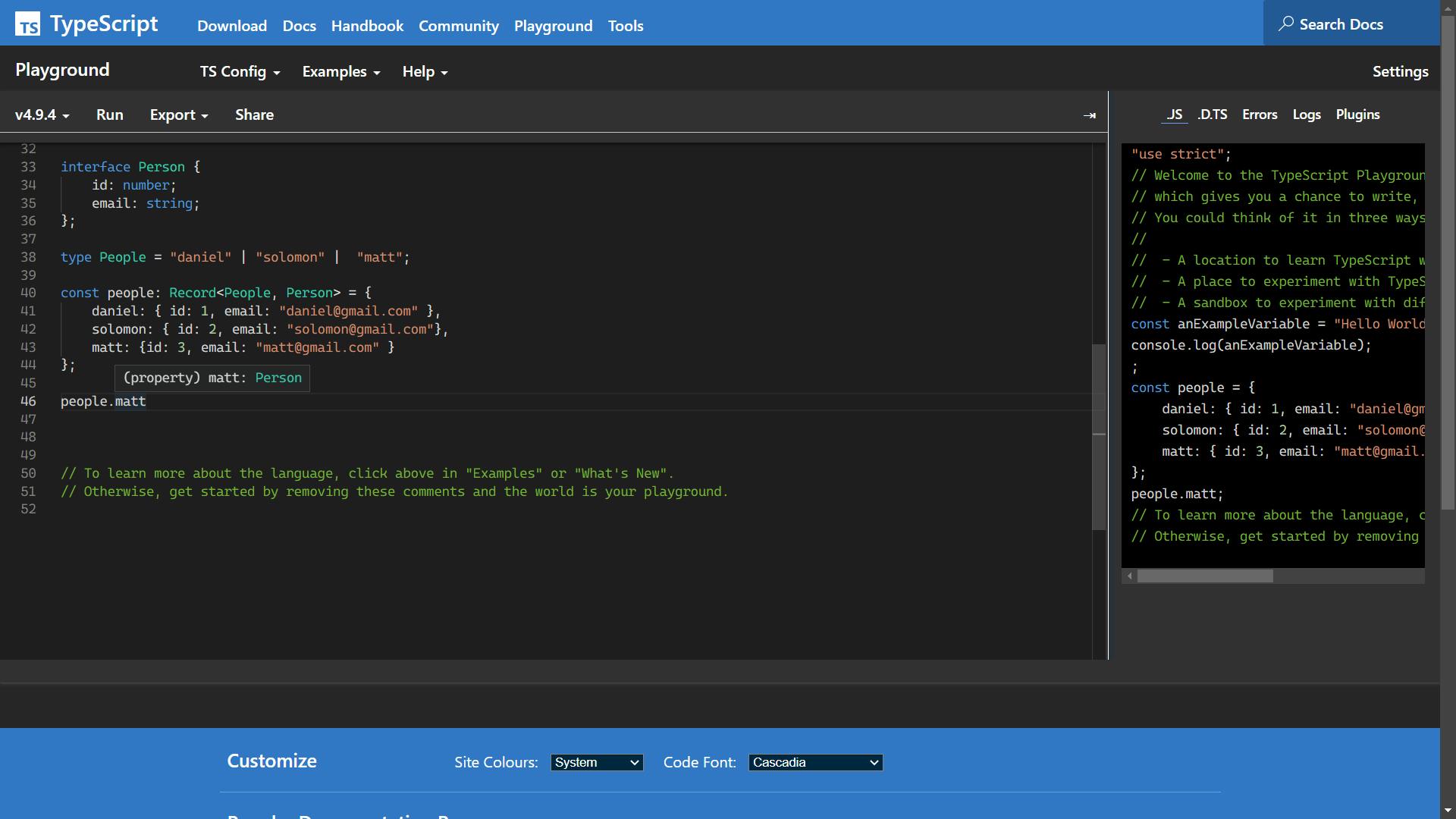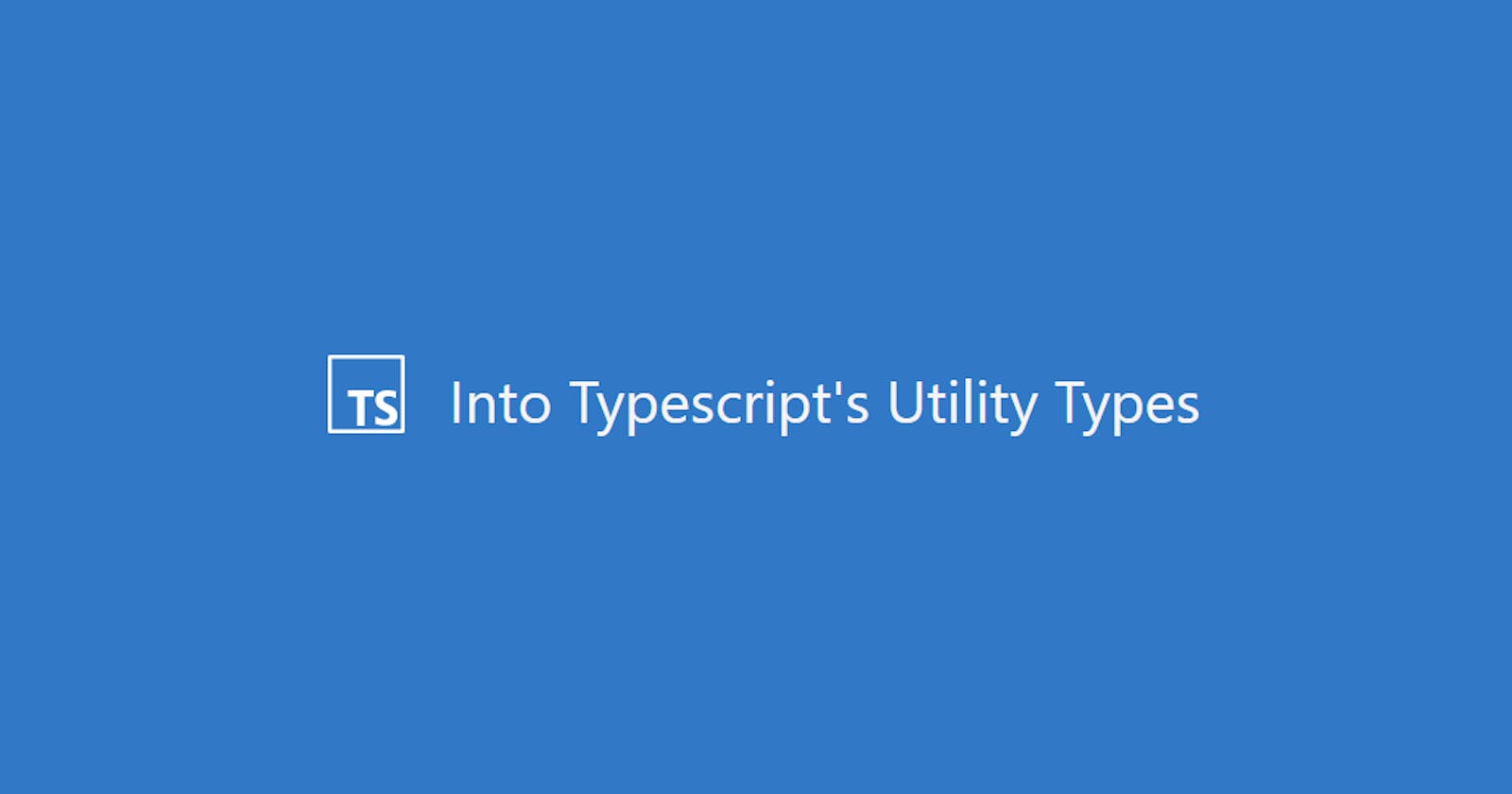Typescript offers a few useful features which enhance developer productivity working with types. Utility Types are one of these features, they are types that are available globally meaning they are in-built and work without you importing them from anywhere. These types can be used to manipulate existing types and create new types by utilizing generics and other type features such as conditional types.
In this article, we would be going over a few in-built utility types, and how to use them, and also we would be creating one to demonstrate how we can use them to create new types. If you want to learn more about in-built utility types that are not covered in this article, you can check out the utility types section in type typescript documentation.
Prerequisite
Moving forward in this article we are gonna assume we are familiar with fundamental Typescript concepts such as its basic types (like string, number, and so on), generics, interfaces and object types. If you know most of these things then you are good to go : )
Let's dive into some utility types
Partial<Type>: We can use thePartialtype to make all properties of a type optional which is the equivalent of making all the properties optional. Let's take a look at an example:
const todo: {
title?: string;
description?: string;
} = {}; // this compiler won't ask you to add the properties
interface Todo {
title: string;
description: string;
}
const todo: Partial<Todo> = {}; // this compiler won't ask you to add the properties
the snippets above are equivalent to each other.

Omit<Type, Keys>: We can useOmitto create a type from an interface by excluding some keys (which would exclude the property with that key).
interface Person {
firstName: string;
lastName: string;
age: number;
dateOfBirth: number;
};
type PersonWithoutDateOfBirth = Omit<Person, "dateOfBirth">;
const personWithoutDateOfBirth: PersonWithoutDateOfBirth = {
firstName: "John",
lastName: "Doe",
age: 22
};

This can be combined with other typescript features to create more advanced utility types (we would be creating one in a sec).
Record<Keys, Type>: This is used to construct an object type whose properties keys are the first argument type of the generic (Keys) in this case and their types being the second argument type of the generic (Type). Meaning when the Object properties would have the same type we can use theRecordutility type to set their types instead of defining them one by one. Let's see it in action:
interface Person {
id: number;
email: string;
};
type People = "daniel" | "solomon" | "matt";
const people: Record<People, Person> = {
daniel: { id: 1, email: "daniel@gmail.com" },
solomon: { id: 2, email: "solomon@gmail.com"},
matt: {id: 3, email: "matt@gmail.com" }
};

Readonly<Type>: This is used to set theTypeto be readonly i.e you can't change the value of the property (typescript compiler would scream at you).
interface Person {
id: number
email: string;
};
const John: Readonly<Person> = {
id: 68,
email: "johdoe@gmail.com"
};
John.email = 1; // compiler error: Cannot assign to 'email' because it is a read-only property.

Pick<Type, Keys>: This creates a type by picking the keys (which is the second argument of the generic) from the type (which is an interface or object type).
interface Person {
id: number;
email: string;
bio: string;
age: number;
};
type PersonProfile = Pick<Person, "email" | "bio">;
const jamesProfile: PersonProfile = {
email: "james@gmail.com",
bio: "I love cats"
};

Let's create our own utility Type
In some cases, you may need to create custom utility types that are not provided by TypeScript by default. This can be done by combining type features such as generics, condition typing, type aliases and so on.
The type we would be creating is a solution to a twitter post I came across.

so from this we are gonna be creating a utility type which would generate a type which is the odd property between two objects, hence the "Diff" or let's just say the difference between two object types. Let's get into the code snippet before I get to the breakdown of it.
type Diff<A,B> = Pick<A & B, keyof (Omit<A, keyof B> & Omit<B, keyof A>)>;
interface A {
a: string;
b: string;
c: string;
};
interface B {
a: string;
b: string;
d: string;
};
type C = Diff<A,B>;
const justC: C = {
c: "c",
d: "d"
};
so here was my solution to it. It might look funny at first but it quite simple. Let's break it down step by step.
First, we must remember that Utility types make use of generics so our two arguments of the generic
AandBrepresent the two object types.So then we pick the difference in properties using the
Pickutility type. Which is whatPick<A & B, keyof (Omit<A, keyof B> & Omit<B, keyof A>)>this does (we'll get to that in a bit.)The first argument in
Pick<A & B, keyof (Omit<A, keyof B> & Omit<B, keyof A>)>is the union of the typesAandB(A & Bas it is in typescript) which is a type that contains all the properties inAand inB.The second argument in
Pick<A & B, keyof (Omit<A, keyof B> & Omit<B, keyof A>)>is the key to all the different properties inAandB(properties inAthat are not inBand vice versa) which is what the union type ofOmit<A, keyof B> & Omit<B, keyof A>represents (forOmit<A, keyof B>we removed all the properties inBthat are inAusing thekeyofoperator to reference the keys of the properties ofBso we can remove them fromAand forOmit<B, keyof A>we removed all the properties inAthat are inBusing thekeyofoperator to reference the keys of the properties ofAso we can remove them fromB) which we then use thekeyofoperator to get the keys of the different properties.
That's just about it, it's not as complicated as it might look.

Conclusion
Utility Types in TypeScript are a powerful feature that can be used to manipulate existing types and create new types in a type-safe manner. TypeScript provides several built-in utility types that can be used in different parts of your application, and it's also possible to create custom utility types when needed.
In conclusion, Utility Types can greatly improve the quality of your code, making it easier to write generic code and ensuring type safety. Until the next one :).
